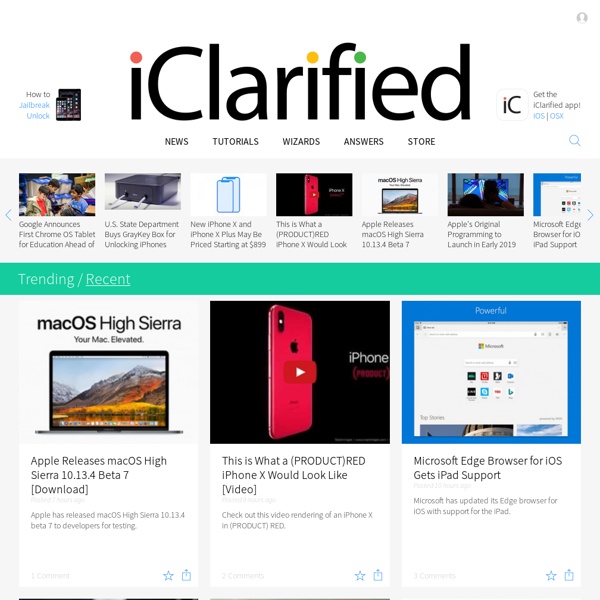



Three years of pwnage(tool) Three years ago (almost to the day!), the first version of PwnageTool was released for firmware 1.1.4. So today we’re excited to release another edition of both PwnageTool and redsn0w to bring an untethered jailbreak for Apple’s latest firmware, FW 4.3.1. The 4.3.1 untether exploit comes courtesy of Stefan Esser (@i0n1c on twitter), a security researcher based in Germany. Stefan has a long history of vulnerability research, and ironically his first contribution to the iPhone jailbreak community was improved security — last year he beat Apple to the punch and implemented ASLR for jailbroken iPhones with his “antid0te” framework. The 4.3.1 untether works on all devices that actually support 4.3.1 except for the iPad2: iPhone3GSiPhone4 (GSM)iPod touch 3GiPod touch 4GiPad1AppleTV 2G (PwnageTool only for now) WARNING WARNING — ultrasn0w users don’t update yet! For everyone else, redsn0w is the easier program to use (and redsn0w runs on both Mac and Windows). Unofficial Mirrors Update #1:
Mirror ePUBr – Biblioteca Digital Brasileira Dev-Team Blog iPhone, iPad, Mac, Apple opinion and news | The Loop Gevey SIM Unlocks iPhone 4 Including iOS 4.3.1, iOS 4.3 Baseband 04.10.01 If you’ve been eagerly waiting for iPhone Dev Team to release a software solution to unlock your iPhone then may have also heard about a SIM card hack called Gevey SIM. Gevey SIM Interproser doesn’t need users to jailbreak their iPhone but works by forcing the activation of the baseband using the emergency dialer. It can unlock iPhone 4 basebands 04.10.01 (bundled with iOS 4.3, iOS 4.3.1), 03.10.01 (bundled with iOS 4.2.1), 02.10.04 (bundled with iOS 4.1). This is how it works: SIM card holds many different types of information, but the part most involved with carrier lock is the IMSI number, which is a unique code that corresponds to your account in the mobile carrier’s database. A sample IMSI might look like this The first two segments are known as Mobile Country Code (MCC) and Mobile Network Code (MNC) respectively, and in the example above the IMSI indicate the SIM is from USA (310) AT&T (150). [..] Unlike its ancestors, the i4 SIM interposer is not a drop-in-and-forget device.
Mail Online Apps do iPad Redsn0w 0.9.10b1 | Jailbr3k Guide pour le jailbreak de votre iDevice, ce dernier sera un jailbreak de type Tethered ou Untethered selon votre iOS actuel. Prenez le temps de lire le guide au complet, surtout dans le cas d’un jailbreak Tethered. iOS 4x iPhone 4, 3GS, 3G iPod Touch 2G,3G et 4G iPad 1 iOS 4.0.1, 4.1, 4.2.1, 4.3.3, 4.3.4 et 4.3.5 iOS 5x iPhone 4S, 4, 3GS. iPod Touch 3G et 4G. iPad 1/2/3. iOS 5.0, 5.0.1, 5.1, 5.1.1 iOS 6x iPhone 4, 3GS. iPod Touch 4G. iOS 6.0, 6.0.1, 6.1b, 6.1.2, 6.1.3 Préambule Les versions iOS 6.0, 6.0.x et 6.1x peuvent être jailbreak (pour certain modèle de iDevice compatible pour le moment) de type Tethered (Semi-Tethered), indiquer au logiciel Redsn0w le firmware 6.0 lors de la procédure du jailbreak et lors de la procédure du Just Boot (menu des Extras du logiciel). Lire ceci sur la stabilité de votre jailbreak avec une sauvegarde iTunes. Un utilisateur iPhone 3G, vous devez utiliser une ancienne version du logiciel Redsn0w 0.9.6, ici. En résumé : Qu’est un jailbreak de type Tethered ? Guide
MacUser